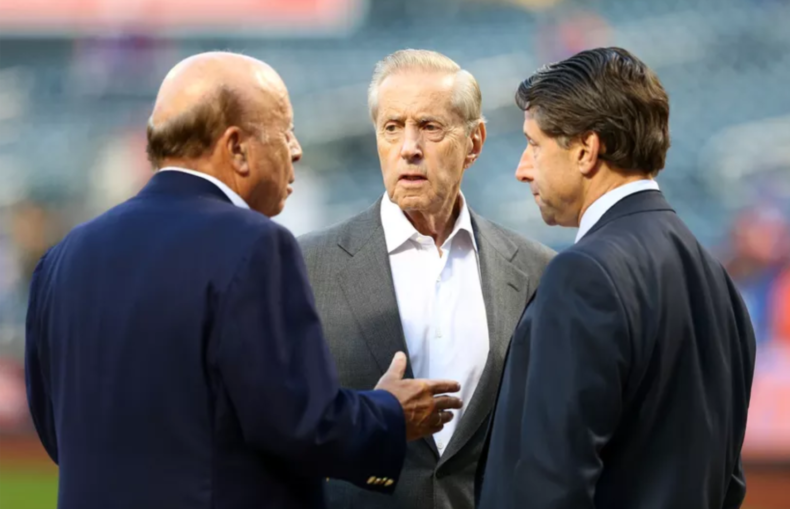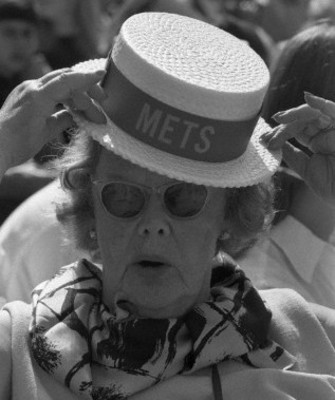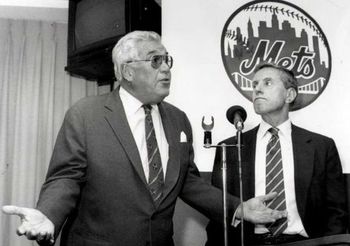
October 30, 2020 will go down as a very important day in Mets history, as Steve Cohen was approved by MLB owners and the mayor’s office to assume control of the franchise.
The Cohen era will begin just after free agency starts on November 1, which should allow for at least some impact on the construct of the Mets’ roster for next season. Cohen will likely tab former Mets’ general manager Sandy Alderson as Head of Baseball Operations, which should lead to a cascading of moves, from a new GM, to other new baseball executives, to possibly a new field manager.
Having been a Mets fan since 1973, I’ve lived through all of the ownership regimes that the organization has had. Here are some of the things that stand out from each.

The Joan Payson era was first, and lasted from 1962-1975. Under Mrs. Payson’s control, the Mets went from laughing stock to world champions in just eight seasons. After the 1969 championship, the Mets remained at minimum competitive through 1975, adding a National League pennant in 1973.
Mrs. Payson surrounded herself with established baseball executives, George Weiss (1962-1966), Bing Devine (1967), Johnny Murphy (1968-1969), Bob Sheffing (1970-1974), and Joe McDonald (1975). Mrs. Payson was instrumental in bringing Willie Mays to the Mets in 1972, so the star could end his career where it began, in New York.
As a very young fan during her era, my memories are fairly limited. I do recall the acquisition of Willie Mays and my father’s reaction (who was a New York Giants fan). The 1973 season was captivating, and sealed my Mets fandom. Like most Mets fans, I’m a bit perplexed by the lack of a Joan Payson statue at Citi Field, as she was not only the first owner, but also instrumental in bringing National League baseball back to New York after the Dodgers and Giants left for California.
After Mrs. Payson passed away in 1975, her husband, Charles Payson, assumed ownership of the team. However, Mr. Payson was not as interested in baseball as his wife, and in a de facto manner passed control of the team to his daughter, Lorinda de Roulet.
De Roulet presided over the Mets from 1975 through 1979, a very dark era in Mets history. The Mets were competitive in 1975 and 1976, then came the rebuild, highlighted (or low-lighted) by the trade of Tom Seaver in 1977. The de Roulet reign, in some ways, reminds me of the recent Wilpon years. Under DeRoulet, the Mets seemed to put finances first (e.g. the Seaver trade), and the team was operated on a low budget.
This led to frustration by the players. In an article in the Chicago Tribune, Mets catcher John Stearns lamented playing for the Mets in the late 1970s.
“We stunk,” said Stearns, the gung-ho catcher whose career coincided with those horrid Mets teams. ”You’d come to the ballpark as a professional, play as hard as you can so you can go home at night and feel you didn’t cheat anyone of an honest effort. But we had a bunch of guys with little experience, role players on other teams.
”We had a guy (Grant) running the team who had no business running a team. He took away the identity of the Mets when he traded Seaver. We were just a bad team spinning our wheels.”
One horrible memory of the de Roulet ownership was the introduction of a new Mets mascot, a mule named “Mettle.” Originally, the idea was to have a gimmick where Mets’ relievers would ride in from the bullpen on the mule. Fortunately, that never happened, though the mule did make appearances at Shea Stadium. The mule was lonely at Shea, as in 1979, the Mets drew fewer than 800,000 fans.
I’ll leave you with this thought on the de Roulet years. While the Yankees were blowing up free agency and winning championships, one of de Roulet’s daughters went public with a cost-savings idea. She proposed that balls taken out of play be washed (like golf balls) and put back into play. This created the kind of bad press that we, as Mets fans, are all too familiar with in the modern era.

In January of 1980, the Wilpon/Doubleday group assumed control of the Mets, purchasing the team from the Payson/de Roulet family for $21.1 million. Their first move was to hire former Orioles executive, Frank Cashen, as GM. We know what happened from there. The Mets built a powerhouse, culminating in a 1986 championship (though many would argue they should have won more).
In 2002, after some internal squabbling, Nelson Doubleday sold his interest in the team to the Wilpon family, which has maintained control of the team until current day. To be fair, some good things happened under the Wilpon (and later Katz) ownership. The Mets went to the NLCS in 2006, and won a pennant in 2015. Citi Field opened in 2009, and it represents an enormous upgrade over dilapidated Shea Stadium.
Initially, the Wilpons spent liberally on players (Mike Piazza being re-signed, Pedro Martinez, Carlos Beltran to name a few). Then, after the Madoff issue, the team began to operate as a (generously) mid-market team. The Mets would not be in play for high-end talent, rather filling the roster with predominantly less expensive, aging, or injured players (such as Rick Porcello and Michael Wacha). The Mets have also let their own stars leave the organization, seemingly for financial reasons (Jose Reyes in 2011, Zack Wheeler in 2019 to name a couple).
Further, when trading players to contending teams at the deadline, the Mets have chosen to accept lesser prospects to avoid having to pay part of the outgoing player’s salary.
All of this has brought us to the dawn of a new day, the Steve Cohen ownership. When reflecting on prior Mets owners, it’s clear that ride has, at best, been uneven. In addition, the Mets have had a knack for publicly embarrassing themselves.
My hope is that Steve Cohen can not only bring championships to Queens, but he can do so by having a consistently competitive team, and a leadership group that returns a sense of pride and professionalism to Flushing.
It’s been an interesting (not always in a good way) journey through Mets’ ownership over the last 47 years. Here’s hoping for a more consistently positive experience going forward under Steve Cohen.















